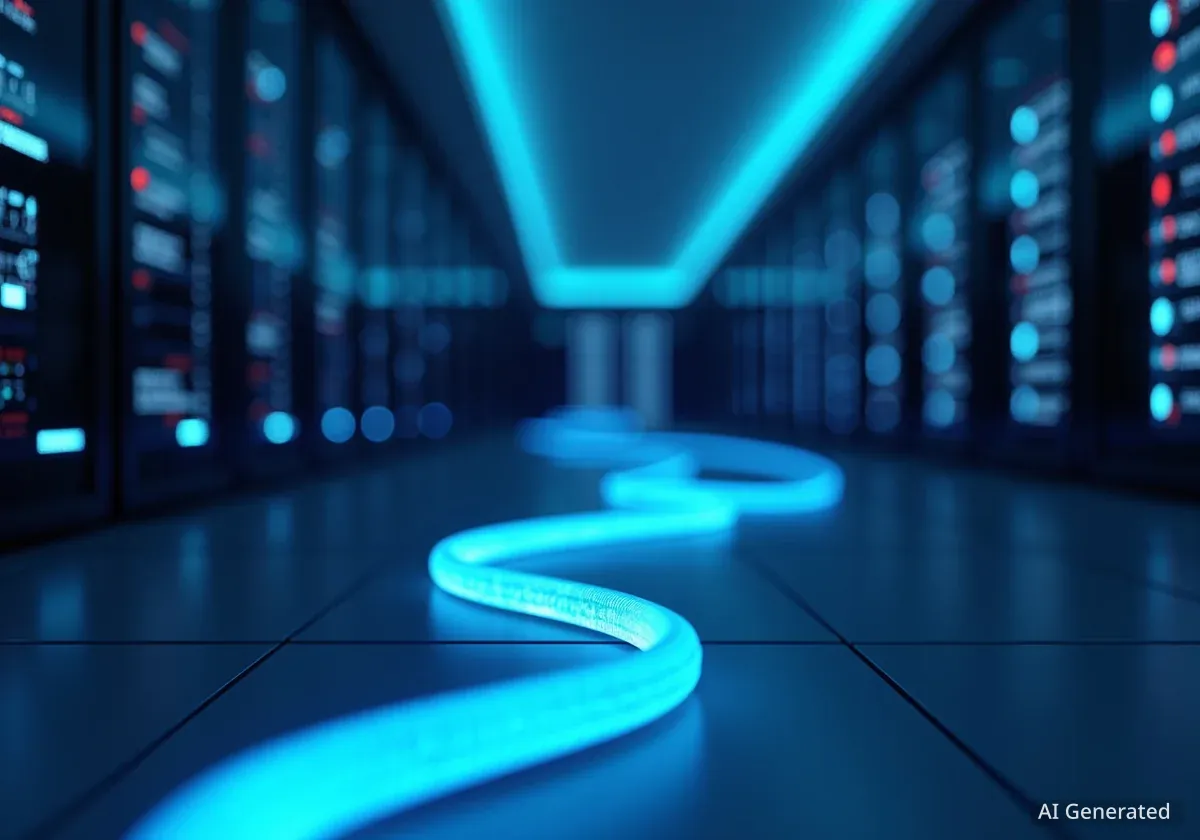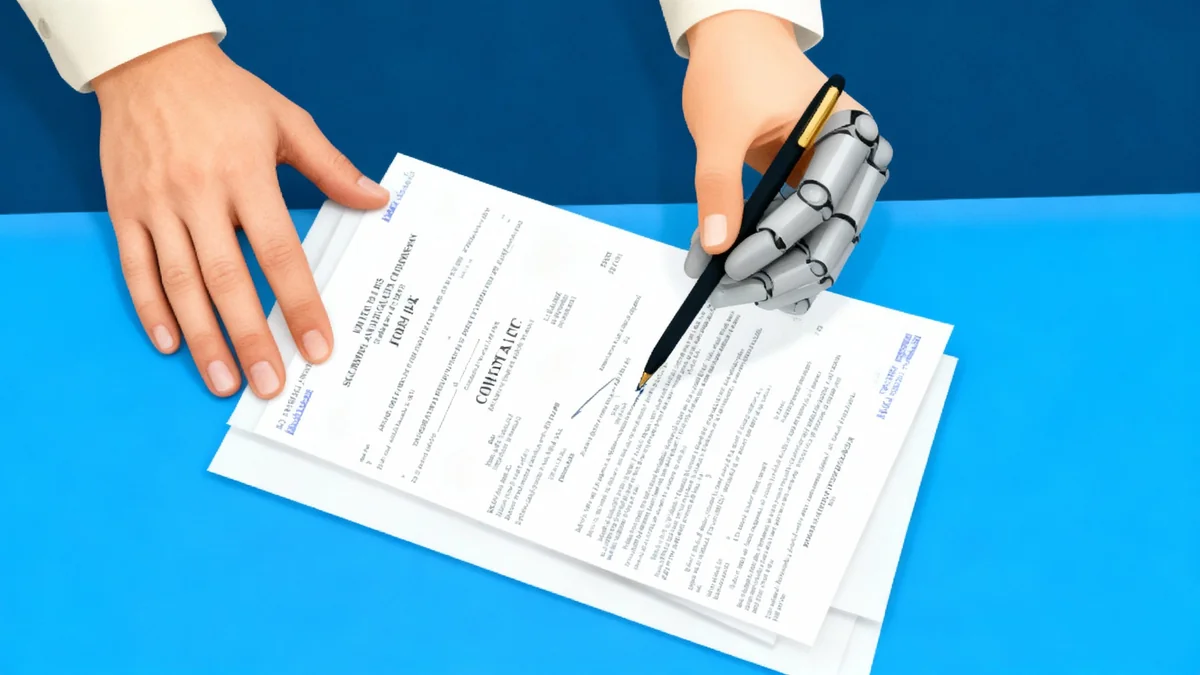The race for artificial intelligence supremacy is being defined by two fundamentally different strategies from tech giants Microsoft and Google. While Microsoft leveraged a strategic partnership to seize an early lead, Google's long-term, vertically integrated approach is now beginning to show its competitive strength, setting the stage for a prolonged battle over the future of AI-powered business.
Microsoft's alliance with OpenAI, the creator of ChatGPT, propelled the legacy software company to the forefront of the AI conversation, creating over $2 trillion in shareholder value since the chatbot's debut in late 2022. This move reshaped market perceptions, but Google's deep-rooted, in-house development of everything from custom chips to foundational models presents a formidable, long-term challenge.
Key Takeaways
- Microsoft's partnership with OpenAI gave it an early market advantage, adding over $2 trillion to its valuation.
- Google is pursuing a vertically integrated strategy, controlling the entire AI stack from custom hardware (TPUs) to software and research.
- The core conflict is between Microsoft's partnership-driven, cloud-centric model and Google's self-reliant, ecosystem-focused approach.
- While Microsoft capitalized on the initial generative AI wave, Google's deep integration across its vast product suite could provide a more durable long-term advantage.
The Partnership Playbook Microsoft's Agile Ascent
Before 2022, Microsoft was widely viewed as a dependable, if unexciting, enterprise software giant. The company's strategic and exclusive cloud partnership with OpenAI changed that narrative almost overnight. By providing the essential cloud computing power for models like ChatGPT, Microsoft positioned itself as the primary enabler of the generative AI revolution.
This alliance proved to be a masterstroke in market positioning. It allowed Microsoft to rapidly integrate cutting-edge AI features, branded as Copilot, across its entire product suite, from the Bing search engine to its ubiquitous Office 365 applications. The market responded with overwhelming enthusiasm.
Unprecedented Value Creation
Since the launch of ChatGPT in November 2022, Microsoft's market capitalization has surged by more than $2 trillion. This rapid growth underscores the immense value investors have placed on the company's AI strategy and its partnership with OpenAI.
The model is clear: Microsoft provides the distribution and infrastructure through its Azure cloud platform, while OpenAI delivers the core AI innovation. This symbiotic relationship allowed Microsoft to bypass the years of foundational research required to build large language models from scratch, giving it a significant first-mover advantage in deploying generative AI to a global customer base.
Google's Vertical Integration A Long-Term Strategy
While Microsoft was making headlines with its OpenAI partnership, Google was quietly leveraging decades of investment in its own end-to-end AI ecosystem. Unlike Microsoft's outsourced innovation model, Google's strategy is built on vertical integration—controlling every critical component of the AI development and deployment pipeline.
This approach begins at the most fundamental level: hardware. Google designs its own custom chips, known as Tensor Processing Units (TPUs), specifically optimized for training and running large-scale AI models. This gives the company a significant efficiency and performance advantage over competitors who rely on third-party hardware.
The Power of In-House Hardware
Google's Tensor Processing Units (TPUs) are custom-designed application-specific integrated circuits (ASICs) built to accelerate machine learning workloads. By controlling the hardware, Google can co-design its software (like TensorFlow) and models (like Gemini) to work in perfect harmony, maximizing performance and minimizing costs for its massive AI operations.
Beyond hardware, Google's control extends through its software frameworks, deep-seated research from divisions like Google DeepMind, and its vast portfolio of consumer and enterprise products. From Search and Android to Google Workspace and Cloud, the company has an unparalleled number of touchpoints to deploy its AI innovations directly to billions of users.
Two Titans Two Philosophies
The competing strategies of Microsoft and Google represent a fundamental philosophical divide on how to win the AI market.
- Microsoft's Model: Focus on being the best partner and platform. By providing the Azure cloud infrastructure for OpenAI and others, Microsoft aims to be the essential utility for the entire AI industry. It's a bet on openness and becoming the central hub for AI development.
- Google's Model: Focus on being the best integrated provider. By controlling the entire stack, Google aims to deliver a seamless, optimized, and deeply integrated AI experience across all its products. It's a bet on the power of a unified ecosystem.
This contrast is not just a technical one; it has profound business implications. Microsoft's approach has been faster to market and has successfully captured the imagination of investors. However, it also introduces dependencies. The company's AI fate is intrinsically linked to its relationship with OpenAI.
Google's path is slower and more capital-intensive, but it offers complete control and the potential for deeper, more powerful product integrations. The success of its Gemini family of models and their integration into core products like Google Search will be a critical test of this long-term strategy.
The Broader Market Context
The battle between these two giants is not happening in a vacuum. The entire technology sector is being reshaped by the demand for AI infrastructure. Chipmaker Nvidia, for instance, has seen its valuation soar to an astonishing $5 trillion by supplying the essential GPUs that power the AI revolution for nearly every major player, including Microsoft.
"The AI revolution has created value on a scale rarely seen before. While software and partnerships have driven Microsoft's growth, the foundational hardware provided by companies like Nvidia remains the bedrock of the entire industry."
This highlights the different layers of the emerging AI economy. Nvidia dominates the hardware layer, while Microsoft and Google are fighting for supremacy at the platform and application layers. Microsoft's bet is that its Azure cloud can become the de facto platform, regardless of whose models run on it. Google's bet is that its superior, end-to-end integration will ultimately provide a more compelling and powerful user experience.
As the initial hype around generative AI matures into a sustained drive for business value, the effectiveness of these two competing models will become clearer. The question is no longer who can create the most impressive demo, but who can build the most sustainable, profitable, and indispensable AI business for the decade to come.





